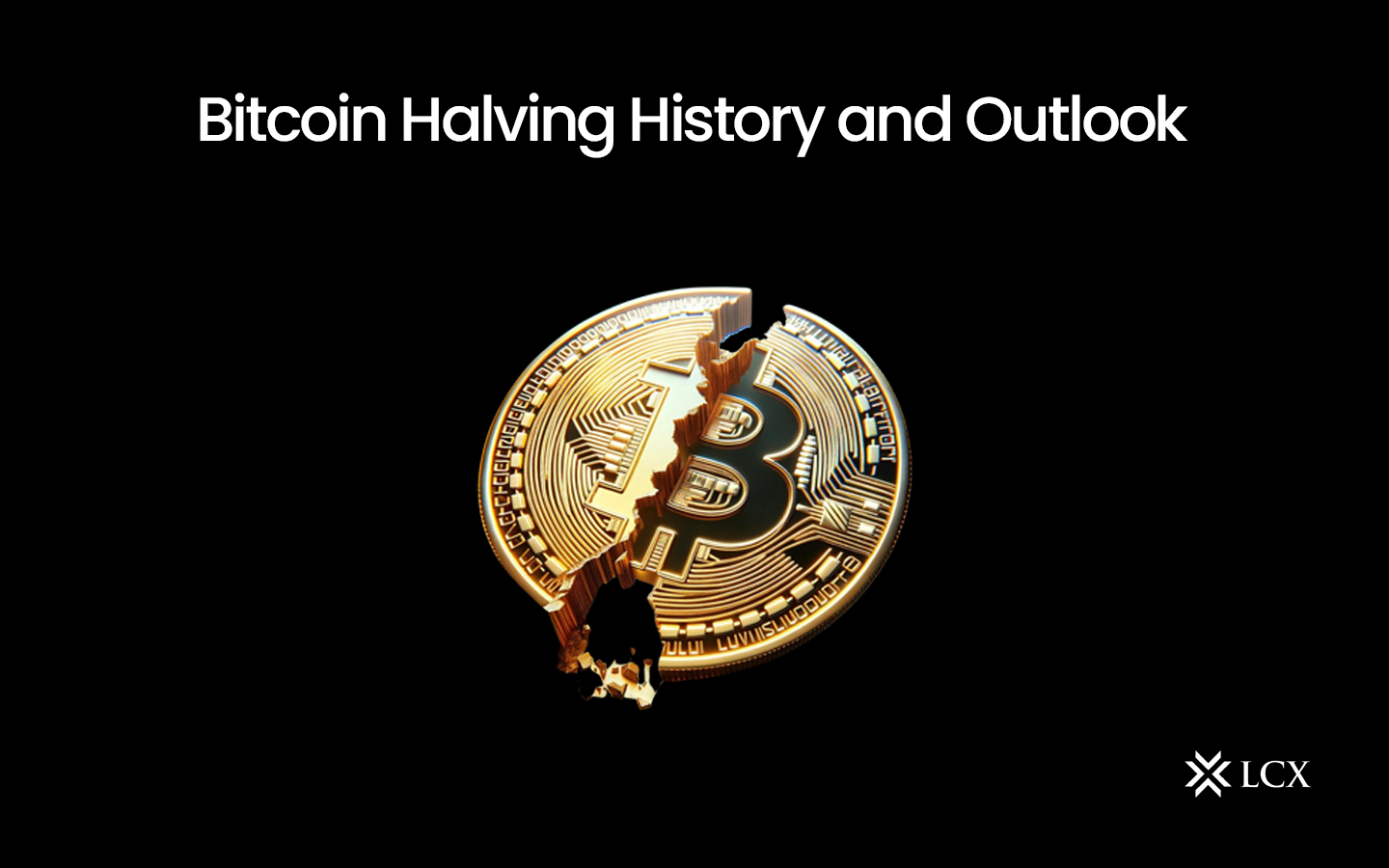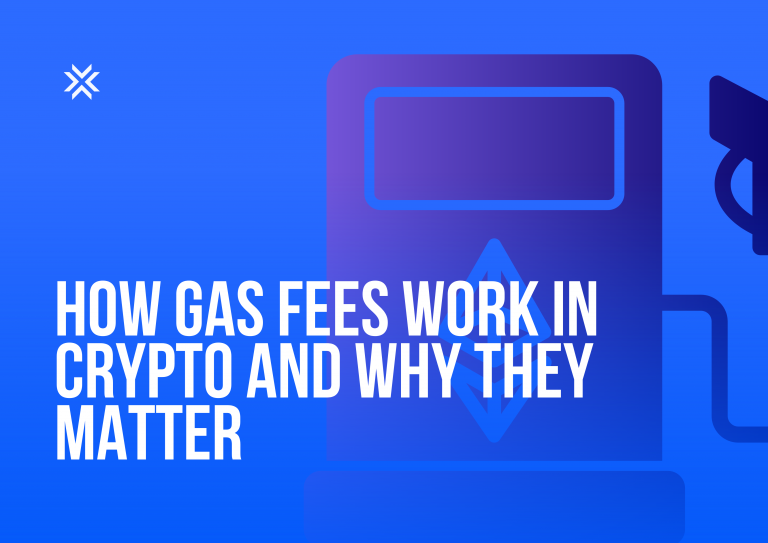Introduction
Bitcoin, within the dynamic domain of cryptocurrencies, serves as an emblematic representation of ingenuity and fortitude. However, Bitcoin’s halving is a process that has captivated the interest of investors, traders, and enthusiasts equally and lies beneath its meteoric rise to prominence. Whether you are an experienced trader or a novice in the world of digital currencies, you must comprehend Bitcoin halving. Thus, what is Bitcoin halving and what are its implications for the most widely used cryptocurrency globally? Let’s dive into the blog to understand Bitcoin Halving.
What Is Bitcoin Halving?
In essence, the Bitcoin halving is a premeditated occurrence that transpires around every 210,000 blocks mined or every four years. The incentive miners receive to validate transactions and append them to the blockchain is halved during this occurrence. This procedure is fundamental to the monetary policy of the cryptocurrency and is hard-coded into Bitcoin’s underlying protocol.
In order to gain a more comprehensive understanding of the Bitcoin halving phenomenon, it is imperative to examine its historical background and the consequential transformations it has induced in the cryptocurrency’s trajectory. From its inception to the upcoming halving event in 2024, we shall examine the ramifications of these pivotal occurrences on the price of Bitcoin, its adoption rate, and the broader cryptocurrency ecosystem.
How Does the 4-Year Cycle of Bitcoin Work?
An intriguing occurrence, the Bitcoin halving is an integral part of the Bitcoin ecosystem. In order to comprehend its importance, one must realize the underlying mechanisms that govern this four-year cycle.
- The Genesis Block: It all began in 2009 when Satoshi Nakamoto, the alias creator of Bitcoin, mined the initial Bitcoin block, also known as the “genesis block.” This event signified the inception of the Bitcoin network. At this time, miners were rewarded with a significant 50 Bitcoins for every block they successfully mined.
- The 4-year Countdown: An event of considerable magnitude transpires every four years, or every 210,000 blocks added to the Bitcoin blockchain: Bitcoin halve. This event transpires in a synchronized manner and is ingrained in the Bitcoin protocol. Once this block count is reached by the network, the miners’ reward is reduced by half. It is anticipated that this process will continue until every one of the 21 million Bitcoins has been extracted, which will occur around 2140.
- Halving Rewards: In the beginning, miners were rewarded with 50 Bitcoins for each new block they mined. Since the initial Bitcoin halving took place in November 2012, this incentive has been reduced to 25 Bitcoins. Later, in July 2016, the reward was further reduced to 12.5 Bitcoins due to the second halving. In May 2020, following the third halving, the reward was reduced to 6.25 Bitcoins. This four-year cycle will persist, culminating in the forthcoming halving in 2024, which will diminish the reward to 3.125 Bitcoins.
- Supply and Scarcity: The allure of this procedure resides in the supply economics governing Bitcoin’s scarcity. The reward for mining is reduced by half every four years, resulting in a substantial deceleration in the rate of new Bitcoins being introduced to the market. This scarcity is a significant determinant of the value of Bitcoin. Bitcoin’s 21 million-unit supply is fixed; its scarcity is intended to cause its value to increase gradually. Demand continues to be robust despite the decline in the rate of new Bitcoin creation, which exerts upward pressure on prices.
A comprehensive understanding of the halving events and the four-year cycle is imperative for grasping the historical performance of Bitcoin, its price patterns, and its status as digital gold. Subsequent sections will provide a more comprehensive analysis of Bitcoin’s halving history, its price repercussions, and potential developments as the next halving occurs in 2024.
Bitcoin Halving: Key Events
| Event | Date | Block Number | Block Reward |
| Launch of Bitcoin | January 2009 | 0 (Genesis Block) | 50 New BTC |
| First Halving | November 2012 | ~210,000 | 25 New BTC |
| Second Halving | July 2016 | ~420,000 | 12.5 New BTC |
| Third Halving | May 2020 | `630,000 | 6.25 New BTC |
| Upcoming Halving | Tentative, April 2024 | ~740,000 | 3.125 New BTC |
The First Bitcoin Halving: November 2012
A turning point in the cryptocurrency’s history, the initial Bitcoin halving took place on November 28, 2012. An in-depth examination of the particulars and consequences of this momentous event is warranted:
Vital Data:
Date: The 28th of November, 2012
Total Supply: Before the halving, the total supply of Bitcoin amounted to slightly more than 10.5 million tokens.
Block Rewards: As compensation, miners were awarded 50 Bitcoins for every newly mined block prior to the halving.
Price at That Time: At the moment of the initial halving, the value of Bitcoin stood at an estimated $12.35.
Block Height: The dividing operation was conducted at block 210,000 in height.
Bitcoin Price Movements
Prior to the initial halving, the price of Bitcoin was comparatively moderate, hovering around $12.35. In the months subsequent to the halving, there was a discernible surge in the price of Bitcoin. As of February 2013, the value of Bitcoin had surmounted $30, signifying a growth of over twofold since that time. This initial halving of Bitcoin’s value established the groundwork for a subsequent bull run.
Key Takeaways:
- The initial Bitcoin halving, which reduced miner rewards from 50 to 25 Bitcoins, caused a substantial upheaval in the Bitcoin ecosystem. The aforementioned modification bestowed Bitcoin with the attribute of scarcity, thereby augmenting its store of value qualities.
- Although the initial effect on the price was not as significant, it established a precedent for subsequent halving incidents, establishing a foreseeable pattern of diminishing rewards and supply limitations that would ultimately affect the price of Bitcoin.
- The first of a succession of four-year cycles that have shaped Bitcoin’s history was the halving in 2012. These occurrences first introduced the concept of digital scarcity and established Bitcoin as the “digital gold.”
- Bitcoin has experienced a significant evolution since its initial halving in 2012 until its forthcoming halving in 2024. This period has seen the cryptocurrency grow from an innovative venture to a global asset class, boasting a market capitalization in the trillions. It is imperative to grasp these historical occurrences in order to forecast and understand the prospective trajectory of Bitcoin.
The Second Bitcoin Halving: July 2016
In July 2016, the second Bitcoin halving occurred, an integral element of Bitcoin’s four-year cycle. Let us delve into the intricacies, fluctuations in price, and significant insights linked to this turning point:
Key Data:
Date: The 9th of July, 2016
Total Supply: Before the second halving, the total supply of Bitcoin amounted to slightly more than 15.7 million coins.
Block Rewards: The block incentives per mined block have been decreased from 25 Bitcoins to 12.5 Bitcoins.
Price at That Time: At the moment of the second halving, the value of Bitcoin was estimated to be around $650.
Block Height: Block 420,000 was where the division occurred.
Bitcoin Price Movements
The second Bitcoin halving event served as a catalyst for significant fluctuations in price. During the months that ensued after the halving, Bitcoin experienced an extraordinary surge in value. As of early 2017, the value of Bitcoin had escalated to approximately $1,000, signifying a growth of over twofold since the occurrence in question. The surge in enthusiasm was ascribed to a multitude of elements, encompassing heightened consciousness and expanding implementation.
Key Takeaways:
- A significant turning point in Bitcoin’s development, the second Bitcoin halving reduced miner rewards from 25 Bitcoins to 12.5 Bitcoins. This further diminished the rate of new Bitcoin issuance, highlighting the digital scarcity characteristic of Bitcoin.
- As demonstrated by the price reaction to this halving, these occurrences have had an effect on the value of Bitcoin. It illustrated that the diminished issuance and the notion of digital scarcity were significant factors in the increase in price.
- In addition to its price implications, the second Bitcoin halving garnered significant media coverage and widespread acknowledgment. Consequently, the acceptability and adoption of Bitcoin as a legitimate asset class continued to increase.
- At the midpoint of Bitcoin’s four-year cycle, the second halving occurred, reiterating the significance of such occurrences in constructing the cryptocurrency’s story and value proposition.
The Third Bitcoin Halving: May 11, 2020
On May 11, 2020, the third Bitcoin halving occurred, a defining moment in the history of Bitcoin. Let us delve into the intricacies, fluctuations in prices, and fundamental insights derived from this momentous occurrence:
Key Data:
Date: The 11th of May, 2020
Total Supply: Prior to the third halving, the total supply of Bitcoin was estimated to be around 18.375 million coins.
Block Rewards: The block incentives per mined block have been reduced from 12.5 Bitcoins to 6.25 Bitcoins.
Price at That Time: During the time period preceding the third halving, the price of Bitcoin was approximately $8,000.
Block Height: The block height at which the division took place was 629,999.
Price Movements
The price of Bitcoin was significantly affected by the third Bitcoin halving. The price of Bitcoin exhibited both short-term volatility and long-term appreciation subsequent to the halving. Bitcoin’s price fluctuated in the months following the occurrence but ultimately entered a bull run that resulted in significant price growth. The price of Bitcoin surpassed $29,000 by the conclusion of 2020, signifying its ascendancy to an all-time high.
Key Takeaways:
- Another decrease in miner rewards occurred with the third Bitcoin halving when block rewards fell from 12.5 Bitcoins to 6.25 Bitcoins. This decrease reinforced the notion of digital scarcity, signifying that a diminished quantity of fresh Bitcoins was being introduced into the market.
- The price fluctuations that occurred after the halving events demonstrated the importance of Bitcoin’s halving as the catalyst for price growth. The surge in demand and expanding institutional interest significantly contributed to the appreciation of Bitcoin’s value.
- Significant interest was generated by the media, the general public, and institutional investors in the third halving. This event indicated the increasing recognition of Bitcoin as a valid means of storing value and protecting against economic uncertainties.
- The aforementioned halving event served to reinforce Bitcoin’s significance within the wider financial domain and facilitated the emergence of a more extensive array of financial products that center around Bitcoin, such as Bitcoin futures and options.
What to Expect in 2024 Bitcoin Halving?
The forthcoming halving of Bitcoin in 2024 is anticipated to be a defining moment in the cryptocurrency world. Here is an overview of the forthcoming events and the elements that contribute to the significance of this halving:
- Scheduled Date: The anticipated date of the 2024 Bitcoin halving is late March or early April, contingent upon the specific countdown timer implemented. Approximately four years will have passed since the last halving occurred in May 2020.
- Reduced Block Rewards: Consistent with prior halving events, the block rewards will be diminished during the 2024 halving. Reduction in half of the current block reward of 6.25 Bitcoins will result in 3.125 Bitcoins per block.
- Impact for Supply and Scarcity: The halving of Bitcoin serves to underscore the digital scarcity of the asset. As the number of newly issued Bitcoins decreases, the current supply becomes more limited. The concept of scarcity significantly influences the appreciation of Bitcoin as time passes.
- Historical Price Trends: An examination of past price trends subsequent to previous halvings reveals that prices tended to surge substantially. Although past performance does not guarantee future outcomes, a considerable number of analysts and enthusiasts predict that the 2024 halving will contribute to a bullish price trend for Bitcoin.
- Growing Institutional Interest: It is anticipated that institutional interest in Bitcoin will continue to expand in the period preceding the halving in 2024. The market participation of more established financial institutions, corporations, and investment firms that have adopted Bitcoin as an asset class and store of value may have an impact on price dynamics.
- Regulatory Developments: The influence of regulatory acceptance and clarity on the trajectory of Bitcoin is pivotal. Possible developments in regulations and policies concerning Bitcoin and other cryptocurrencies may occur prior to the 2024 halving, which could have an effect on their market behaviour and adoption.
Bitcoin Price Projection for 2024
With 2024 on the horizon, the cryptocurrency market seems positioned to experience optimistic momentum. It is anticipated that the year will commence with a substantial advantage for the bulls, in stark contrast to the bearish sentiment observed in 2023. This bullish sentiment is precipitated by the conclusion of the Bitcoin Halving in April 2024. There is an expectation that the price of Bitcoin will experience a rapid increase, surpassing the initial level of resistance located at approximately $38,500. While it is possible that a slight price correction could ensue prior to surpassing $40,000 as the annual high, it is improbable that this will hinder the overall upward trend.
The price surge may acquire momentum in the latter half of the year, potentially instigating a strong bull run. It is anticipated that the current uptrend will reach its pinnacle as Bitcoin closes the year at an unprecedented price, fluctuating between $72,000 and $75,000. This would represent a momentous stop in the annals of Bitcoin’s price.
How Many Bitcoin Halving Will There Be?
The Bitcoin protocol is structured to undergo 32 halving incidents in total. Every four years, these halvings are programmed to reduce the block rewards by fifty percent. Subsequent to the initial Bitcoin halving in 2012, three additional halvings have transpired, the most recent occurring in May 2020.
The fourth in a series, the forthcoming Bitcoin halving in 2024 will proceed until the maximal supply of 21 million Bitcoins is exhausted. Each halving affects the supply and value of the cryptocurrency by writing a new chapter in its history. As Bitcoin approaches its maximal supply, the aforementioned occurrences will persistently influence its investment environment and economic framework. The correlation between Bitcoin’s scarcity and its status as digital gold is closely intertwined with the sequence of its halving events, rendering each one a momentous juncture in Bitcoin’s trajectory.










